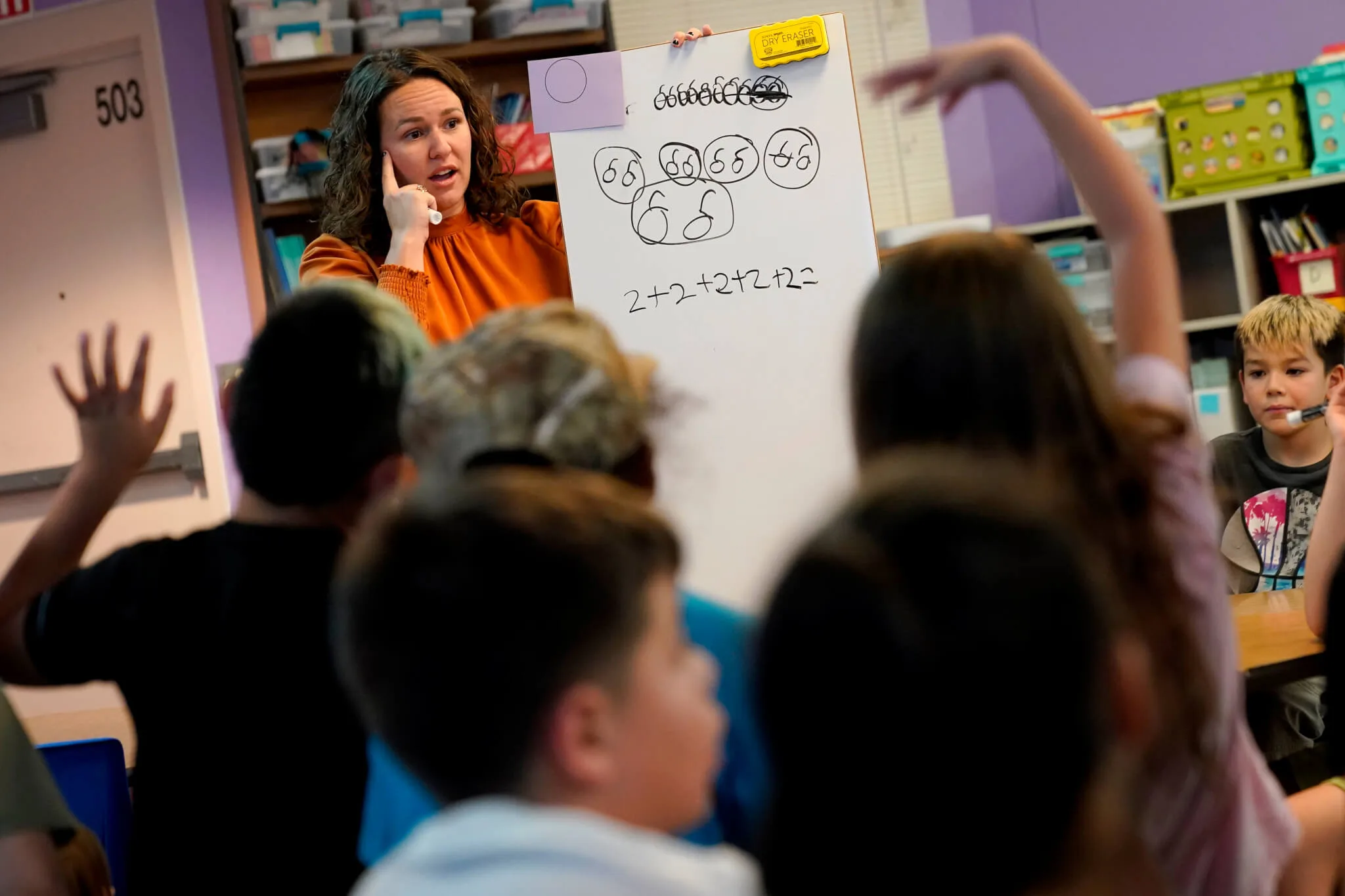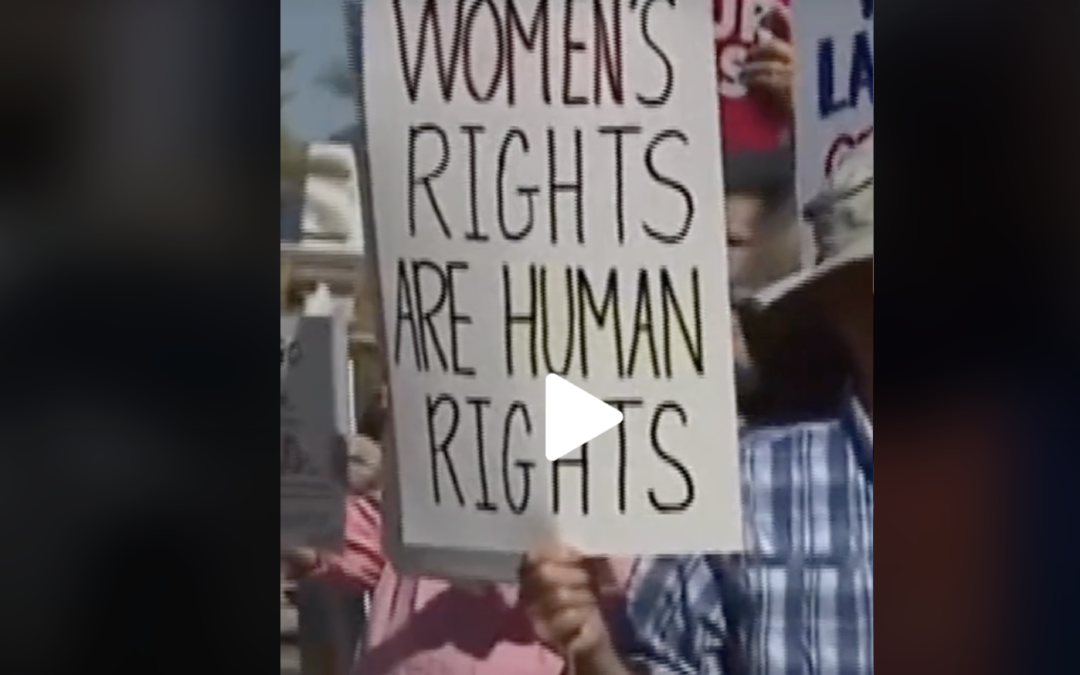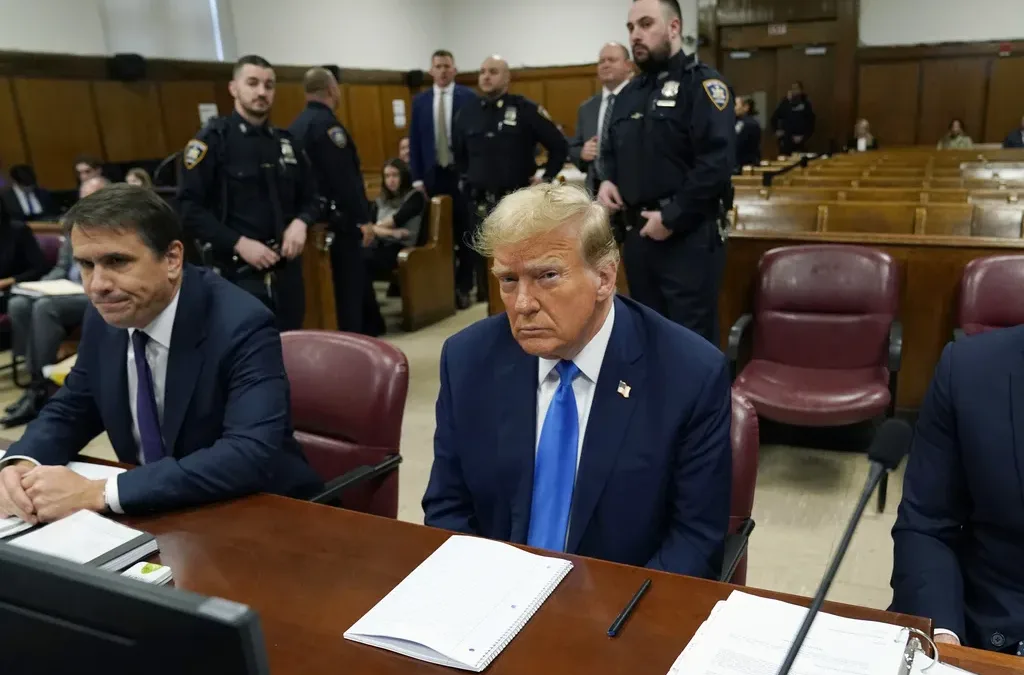
AP Photo/Matt York, File
The state budget provides nearly $400 million in additional education funding, but no spending limit on Arizona’s costly universal voucher program.
Arizona’s school system will see millions more in funding than expected for the 2023-2024 school year, but minimal oversight on its universal voucher system that has quickly become costlier than anticipated.
Negotiations around the state’s annual budget between Democratic Gov. Katie Hobbs and state legislators resulted in a large infusion of one-off and ongoing funding for Arizona schools at every level. Investments include:
- $342 million to maintain and upgrade K-12 school facilities
- $300 million one-time additional funding for K-12 schools secured by legislative Democrats
- $88 million in recurring funding for Arizona’s K-12 school system
- $85 million additional funding for Arizona’s public universities
A Temporary Lift on Education Spending
The budget also lifts a decades-old cap on education spending, known as the Aggregate Expenditure Limit (AEL), for next school year, ensuring that schools will receive the money promised to them. But while it lifted one cap on education spending, some lawmakers expressed frustration that the state’s spending plan didn’t limit spending in other areas.
RELATED: 9 Things to Know About Arizona’s New Budget for 2023-2024
“I’m proud that we secured $300 million for our K-12 schools—and raised the AEL so schools can spend it. I’m proud that we secured $85 million for our universities,” Rep. Laura Terech, a Scottsdale Democrat, said in a statement. “However, I was very disappointed that the budget excluded a cap on universal ESAs. These vouchers are costing our state nearly $500 million—and growing—per year.”
Still No Limit On Universal Voucher Spending
When Hobbs came into office in January, she did so with plans to undo the massive expansion in the state’s school voucher program. Under this program, students can apply to use public money for private-school tuition and other education costs.
Hobbs’ office had said the expansion, passed under former Gov. Doug Ducey, siphons money from underfunded public schools and would cost $1.5 billion over the next decade.
RELATED: Arizona School Vouchers—What They Are and How They Affect You
The governor didn’t propose doing away with all vouchers, but she wanted to return the voucher program to what it was before Ducey expanded it to include every child in the state. Previously, only children with disabilities, students living on American Indian reservations, students attending low-performing public schools, and others were eligible for voucher funds.
Despite her criticism of the expanded vouchers, the budget negotiated by Hobbs didn’t include any caps on the expansion. Instead, the governor and legislators agreed to create an oversight committee for the program as a way to reduce fraud and provide more transparency into how it’s administered.
A Decade in the Making
Arizona now has the nation’s most expansive private school voucher law. It allows parents of the more than 1.2 million school-age children to get 90% of the state money that would normally go to their local public school and use it for private or other school costs.
The voucher system started in 2011 with a small program that only applied to disabled children, who were (and are) eligible to receive up to $40,000 a year for specialized therapy. The Republican-controlled Legislature expanded it repeatedly over the past decade.
Nearly 12,000 students participated in the program before it was expanded last year. Now, more than 55,000 students are currently in the program. The average voucher amount now stands at around $10,000 per student.
The Associated Press contributed to this report.
CONTINUE READING: How Latest School Voucher Expansion Caters to Wealthy at Students’ Expense
Politics

Trump says he’s pro-worker. His record says otherwise.
During his time on the campaign trail, Donald Trump has sought to refashion his record and image as being a pro-worker candidate—one that wants to...

VIDEO: Hundreds show up in Scottsdale to support reproductive rights
@coppercourier Days after the Arizona Supreme Court ruled to enforce a long-dormant law that bans nearly all abortions, hundreds took part in a...
Local News

US court rejects a request by tribes to block $10B energy transmission project in Arizona
In Arizona, work was halted briefly in November amid pleas by tribes to review environmental approvals for the San Pedro Valley. ALBUQUERQUE, N.M....

What to know about Trump’s legal issues
Over the past year, former president Donald Trump has become the center of not one, not two, not three, but four criminal investigations, at both...





